Although solar activity was at low levels over the past 24 hours, multiple long-duration C-class solar flares, associated with activity from Region 3599 as it rotated beyond the west limb, produced coronal mass ejections (CMEs) that sent proton flux rising to S1 – Minor levels.
The greater than 10 MeV proton flux slowly became enhanced after 06:00 UTC on March 15, following activity from Region 3599 beyond the W limb, and reached S1 – Minor levels beginning at 20:50 UTC. The greater than 2 MeV electron flux was at normal to moderate levels.
These high-energy particles can reach Earth anywhere from 20 minutes to many hours following the initiating solar event. The particle energy spectrum and arrival time seen by satellites vary with the location and nature of the event on the solar disk.
On average, there are around 50 S1 – Minor solar radiation storms per solar cycle.
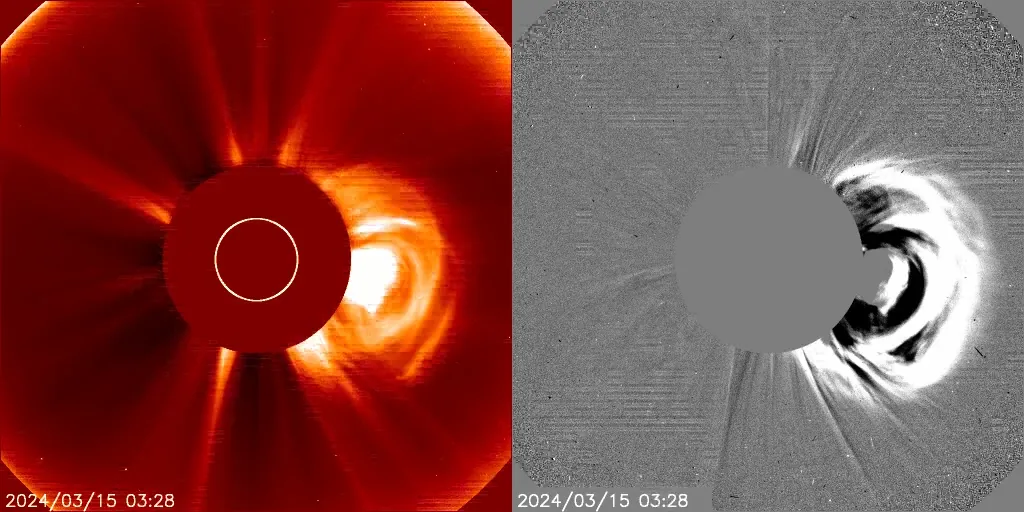
While there are no biological effects or impacts to satellite operations under S1 conditions, minor impacts on HF radio are expected.
Biological concerns, per NOAA scale, start from S2 – Moderate conditions, mostly affecting passengers and crew in high-flying aircraft at high latitudes as they may be exposed to elevated radiation risk. During S2 storms, infrequent single-event upsets are possible in satellite operations, as well as small effects on HF propagation through the polar regions and navigation at polar cap locations.
SWPC forecasters expect proton flux to return to background levels by March 18, without reaching S2 levels.
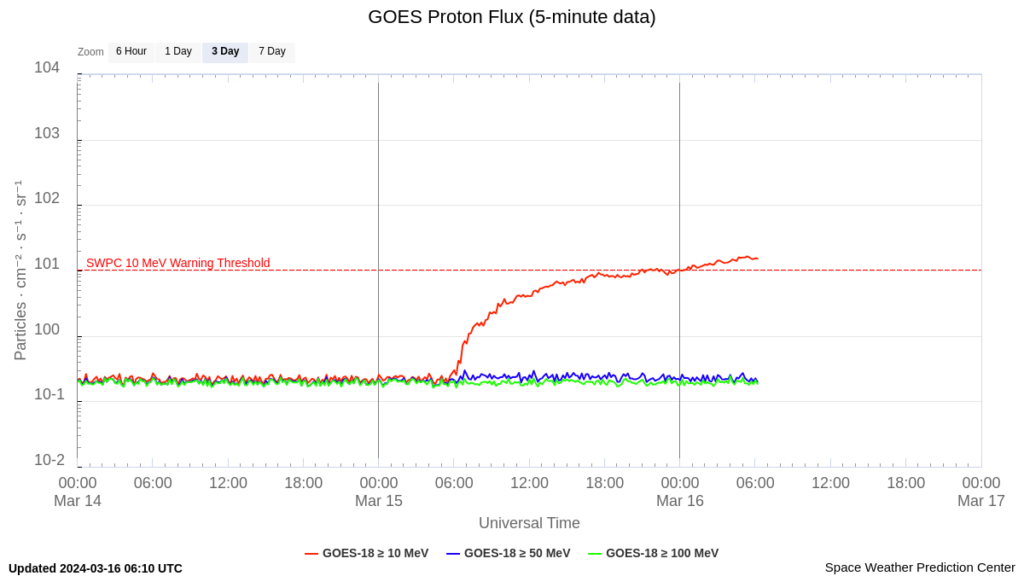

Solar wind conditions were weakly enhanced over the past 24 hours due to influences of a positive polarity coronal hole high speed stream (CH HSS). Solar wind speeds ranged from 375 to 450 km/s, total field strength decreased from 7 nT to 4 nT, and Bz varied +/-5 nT. The phi angle was positive.
Weakly enhanced solar wind conditions are expected to prevail through March 17 due to continued CH HSS influences. Background levels are expected to return by March 18.
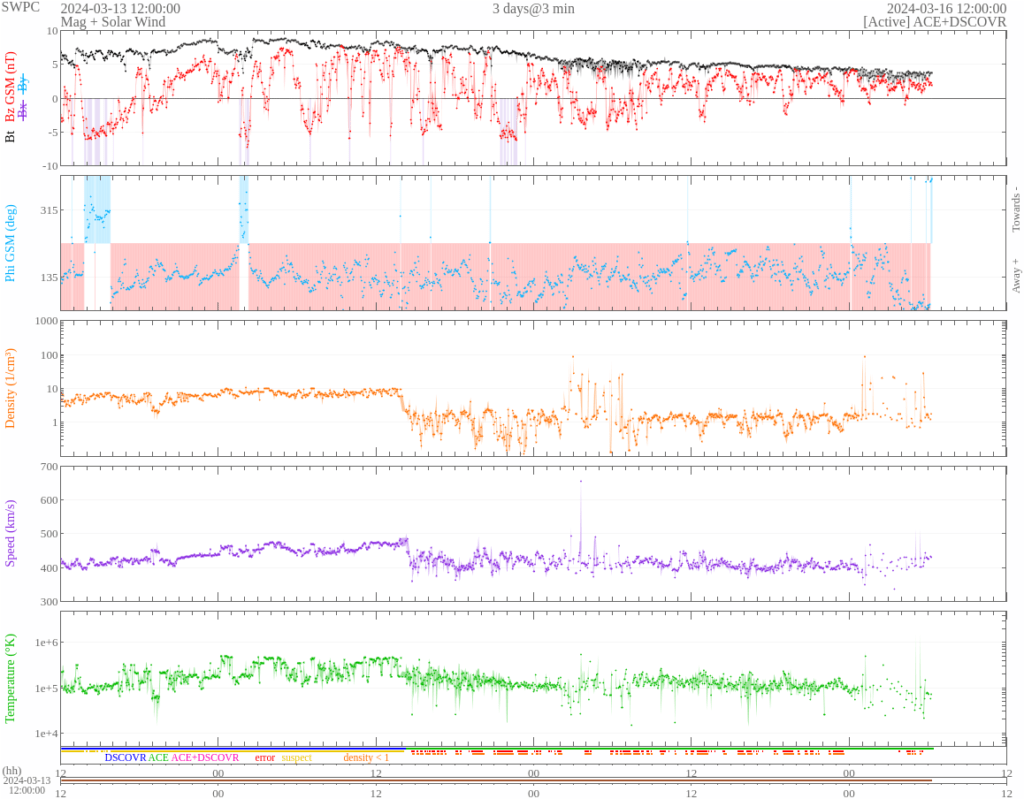

The geomagnetic field was at quiet to active levels due to CH HSS influences and is expected to be at quiet and unsettled levels through March 17 due to continued CH HSS influences. Quiet conditions are expected on March 18.
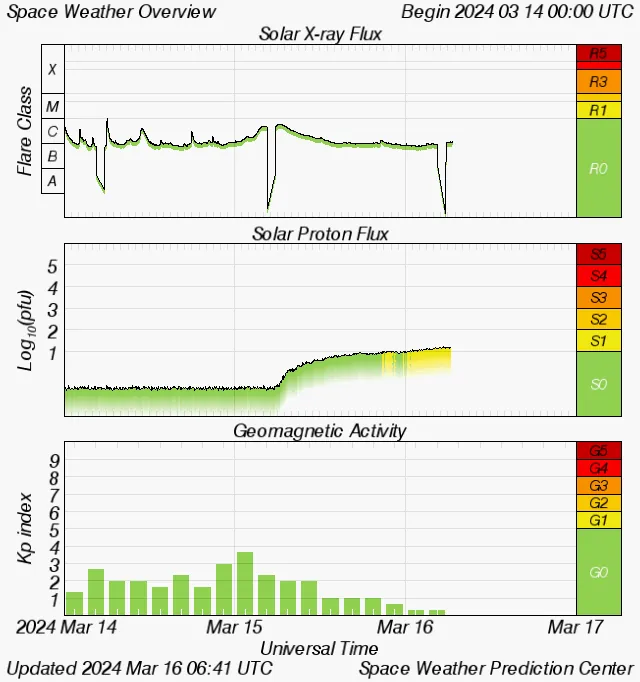

Solar activity is expected to be low today, with a slight chance for M-class flares due primarily to the eruptive potential of Region 3599 as it rotates further beyond the W limb. Very low to low levels are expected on March 17 – 18.
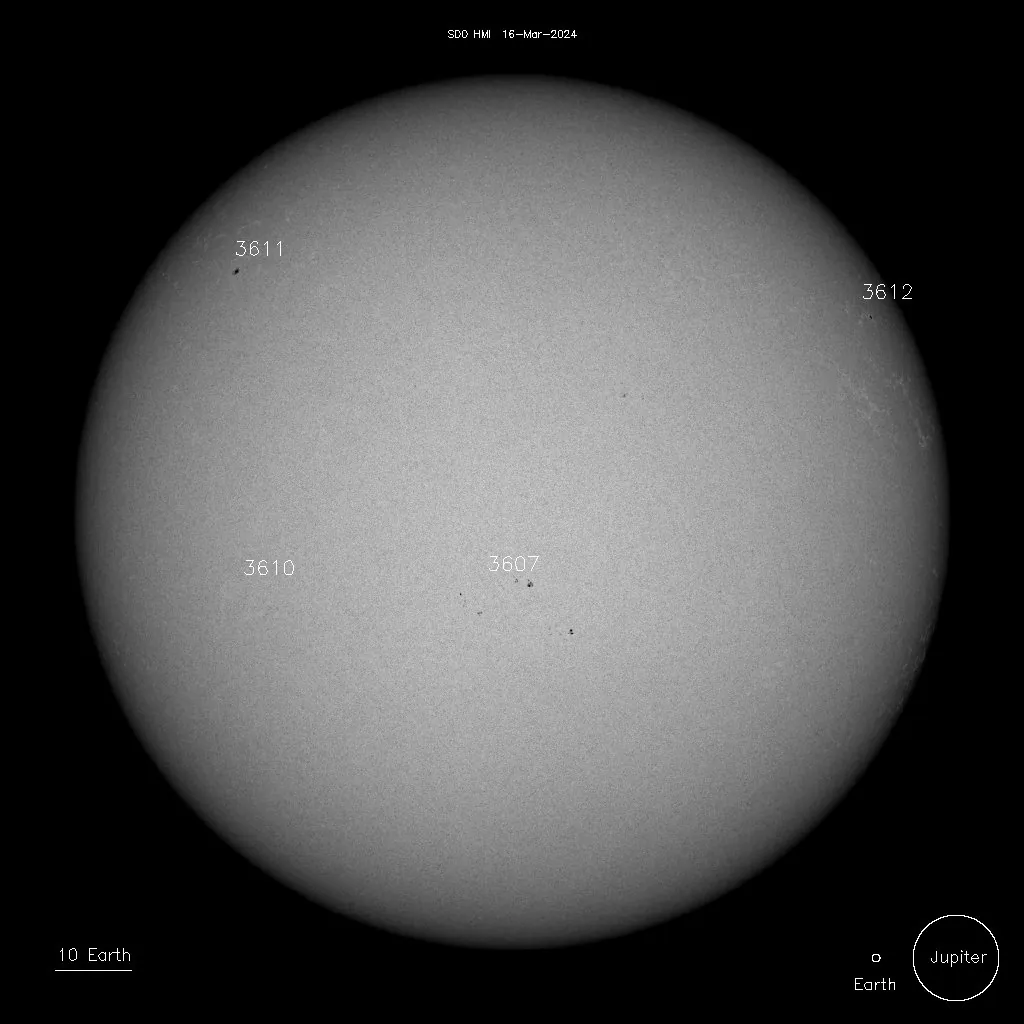

References:
1 Forecast Discussion Issued: 2024 Mar 16 0030 UTC – Prepared by the U.S. Dept. of Commerce, NOAA, Space Weather Prediction Center
Featured image: CME produced by AR 3599 on March 15, 2024. Credit: NASA/ESA LASCO C2 and C3, Helioviewer, The Watchers
Strong M7.4 solar flare erupts from AR 3599, producing CME
Sunday, March 10, 2024
Filament eruption produces large CME, slight graze possible
Thursday, March 7, 2024
Major X6.3 solar flare erupts from Region 3590
Thursday, February 22, 2024
Two X-class solar flares – X1.8 and X1.7 erupt from Region 3590
Thursday, February 22, 2024
Major X2.5 solar flare erupts from AR 3576, producing large CME
Friday, February 16, 2024
Three CMEs heading toward Earth, impact expected on February 13
Monday, February 12, 2024
Proton flux rising after powerful farside eruption, S1 – Minor solar radiation storm
Monday, February 12, 2024